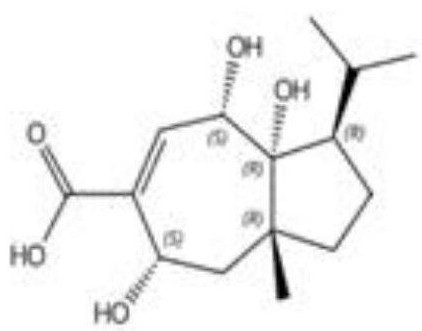Application of roseolic acid C to preparation of medicine for preventing and/or treating epilepsy
A rose acid and epilepsy technology, applied in the field of medicine, can solve problems such as prolonging the depolarization time, and achieve the effect of reducing the level of epileptic seizures
- Summary
- Abstract
- Description
- Claims
- Application Information
AI Technical Summary
Problems solved by technology
Method used
Image
Examples
Embodiment Construction
[0054] Hereinafter, the present invention is described in more detail to facilitate understanding of the present invention.
[0055] Effects of roseic acid C on pentylenetetrazol epilepsy model rats.
[0056] Epilepsy is characterized by paroxysmal abnormal discharge of neurons leading to sudden, repeated and transient central nervous system dysfunction. Increased neuron excitation and excessively synchronized discharge may be the basic conditions for epilepsy. The classic epileptogen PTZ ignition model is considered to be one of the ideal animal models for simulating human epilepsy. Intraperitoneal injection of PTZ or administration of cerebral cortex can induce animal epilepsy models, and PTZ itself has no special neurotoxic effect, so it is a common model for studying epileptic seizures and neuronal damage.
[0057] (1) Experimental process
[0058] 1. Experimental reagents and instruments
[0059] Pentylenetetrazol (PTZ) was purchased from Sigma Company of the United Stat...
PUM
| Property | Measurement | Unit |
|---|---|---|
| diameter | aaaaa | aaaaa |
Abstract
Description
Claims
Application Information
 Login to View More
Login to View More - R&D Engineer
- R&D Manager
- IP Professional
- Industry Leading Data Capabilities
- Powerful AI technology
- Patent DNA Extraction
Browse by: Latest US Patents, China's latest patents, Technical Efficacy Thesaurus, Application Domain, Technology Topic, Popular Technical Reports.
© 2024 PatSnap. All rights reserved.Legal|Privacy policy|Modern Slavery Act Transparency Statement|Sitemap|About US| Contact US: help@patsnap.com










